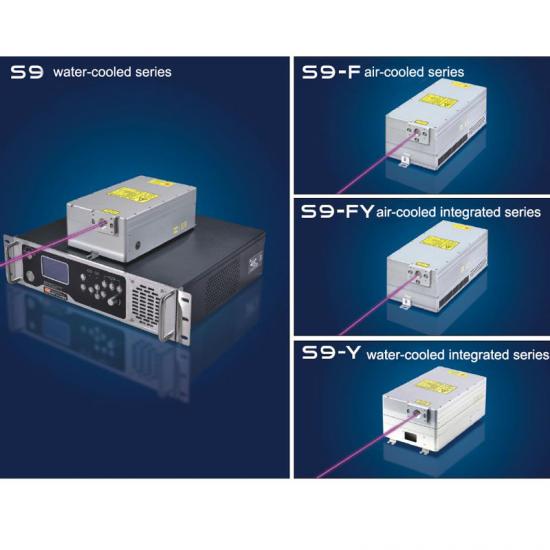Latest Blog
What is a UV Laser?
Apr 07 , 2022What is a UV Laser?
UV Laser or Ultraviolet Laser offer extremely high photon energy which opens up a wide range of applications that can’t be addressed by visible and infrared laser sources.
UV lasers use a highly absorptive wavelength (355 nm) to mark parts. This high absorption rate allows UV lasers to perform "cold marking," ensuring that no extra heat stress is applied to materials, including those with high reflectance such as gold, silver, and copper. This minimizes soot and burrs caused by typical marking and processing.
It’s important to point out that while 355 nm and 266 nm are the most common UV laser wavelengths, there are also several other Nd: YAG lines that can be doubled and tripled to produce a wide variety of UV wavelengths. To achieve these higher-order harmonics, the electric field density of the laser must be extremely high, as a result, these lasers are primarily available with q-switched lasers. Continuous-wave (CW) UV laser diodes are also available at 375 nm, with both single-mode and multi-mode beam profiles, and with either free space or fibre-coupled outputs. OEM laser packages and CW laser modules are available for both ultraviolet laser diodes and q-switched lasers.
Apart from real ultraviolet lasers, there are ultraviolet laser sources based on a laser with a longer wavelength (in the visible or near-infrared spectral region) and one or several nonlinear crystals for nonlinear frequency conversion. Some examples:
• The wavelength of 355 nm can be generated by frequency tripling the output of a 1064-nm Nd:YAG or Nd:YVO4 laser.
• 266-nm light is obtained with two subsequent frequency doublers, which in effect quadruple the laser frequency.
• Diode lasers can be equipped with nonlinear frequency conversion stages to produce UV light. For example, one may use a continuous-wave near-infrared laser and apply resonant frequency doubling twice, arriving at wavelengths around 300 nm. A main attraction of this approach is that a wide range of wavelengths is accessible, with no limitations to certain laser lines.

uv laser | green laser | Ultraviolet lasers | uv dpss laser | nanosecond laser | UV laser source | Solid State Lasers
How do UV Lasers Work?
By passing a standard wavelength laser (1064 nm) through a non-linear crystal, the wavelength is reduced to 532 nm. This light is further passed through another crystal, effectively reducing its wavelength to 355 nm. As a result, UV lasers are commonly called third-harmonic generation (THG) lasers.
Ultraviolet lasers need to be made with special ultraviolet optics, having a high optical quality and (particularly for pulsed lasers) a high resistance to UV light. In some cases, the lifetime of a UV laser is limited by the lifetime of the used optical elements such as laser mirrors. For the extreme ultraviolet region, there are sources based on high harmonic generation. Such sources can reach wavelengths down to a few nanometers while still having a table-top format. The average output powers, however, are fairly low.
Advantages of UV Laser
1. Compared with standard laser light (1064 nm) and green laser light (532 nm), UV laser light has a remarkably higher material absorption rate. This means the power does not need to be increased to create highly visible marks.
2. UV lasers can mark highly reflective materials like gold, silver and copper with minimal heat damage thanks to the high absorption rate of UV light. This minimizes soot and burrs, prevents surface damage and enables corrosion-resistant marking.
Applications
Ultraviolet lasers find various applications:
Pulsed high-power ultraviolet lasers can be used for efficient cutting and drilling of small holes in a variety of materials, including materials that are transparent to visible light.
High energy UV pulses are used for the technique of laser-induced breakdown spectroscopy.
With far lower pulse energies in a precisely focused beam, one e.g. do microdissection of biological materials under a microscope or perform photoluminescence analysis (fluorescence lifetime measurements).
Continuous-wave UV sources are required for micro-lithography and for wafer inspection, e.g. in the context of semiconductor chip manufacturing. Another application is UV Raman spectroscopy.
Both continuous-wave and pulsed UV lasers are used for fabricating fibre Bragg gratings.
Some methods of eye surgery, in particular refractive laser eye surgery of the cornea in the form of LASIK, require UV (sometimes even deep-UV) laser sources.
Ultraviolet laser sources involve some special safety hazards, mostly related to the risks of eye damage and causing skin cancer.